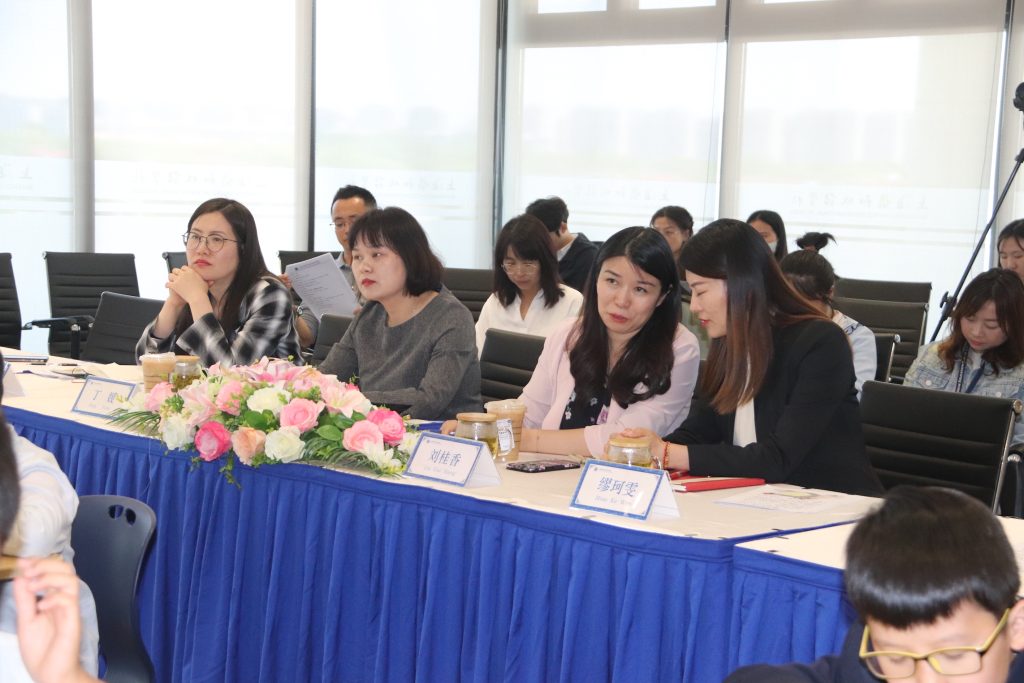
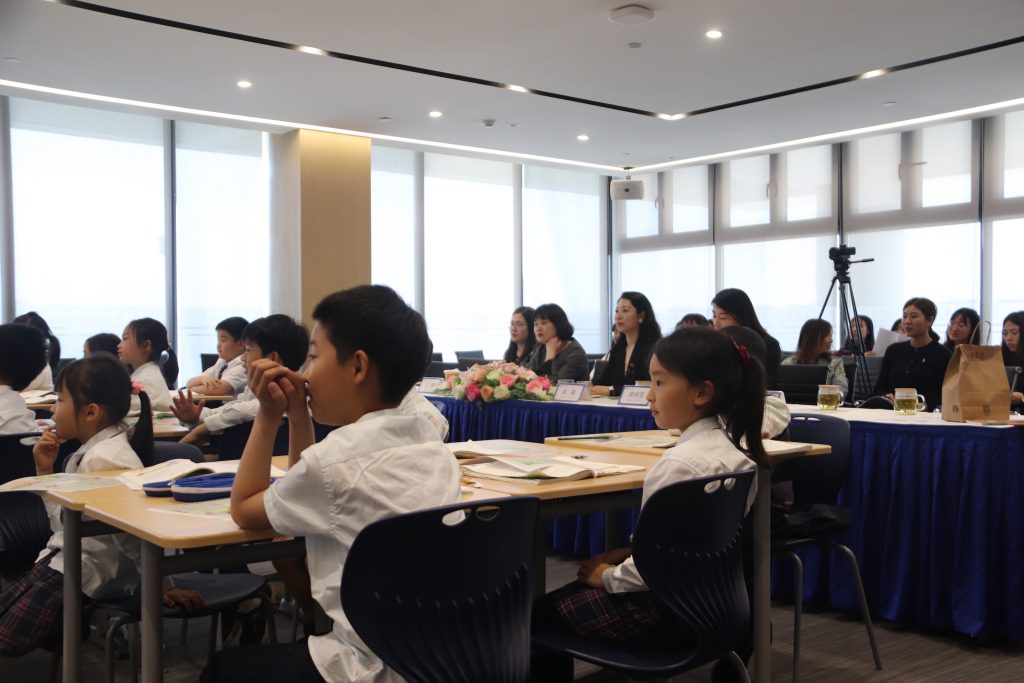
The Chinese Language team from SUIS Qingpu’s Primary School recently had the honour of welcoming Professor Ding Yuan, a district Chinese language teaching and research officer, who visited the school and guided this teaching and research activity. This teaching and research activity was divided into two parts: first, observing demonstration classes of two representatives of the young teachers in the group, Huang Yun and Hu Yu. Assistant Principal Helen Liu and the Executive Head of the Primary School Michelle Song were present to provide guidance and support. Professor Ding helped to evaluate the lessons based on the requirements of the new Chinese language curriculum standards.
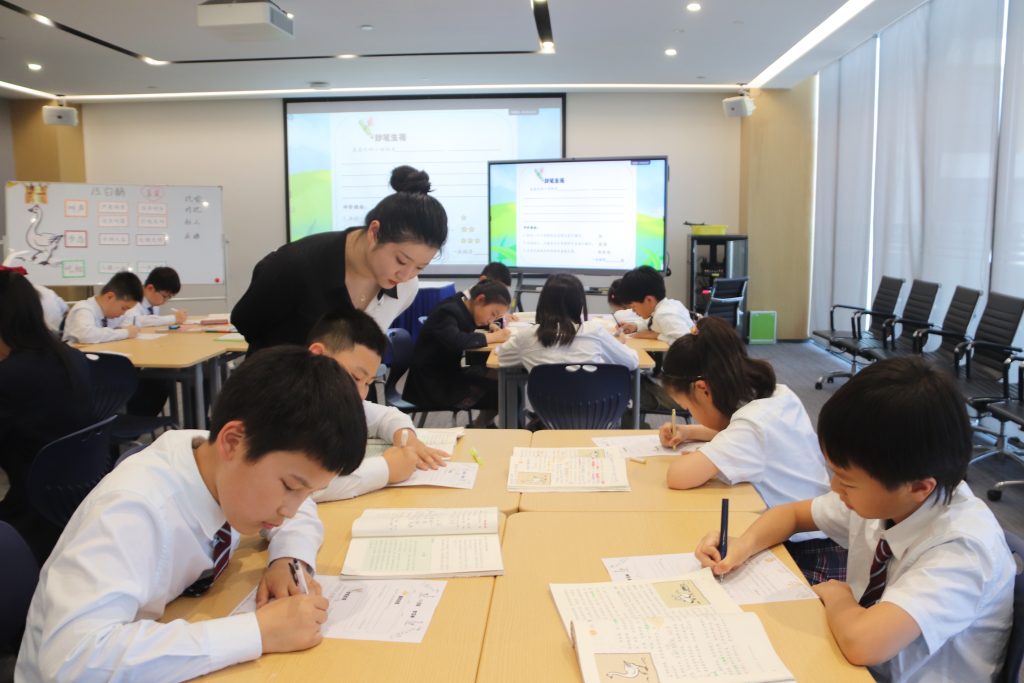
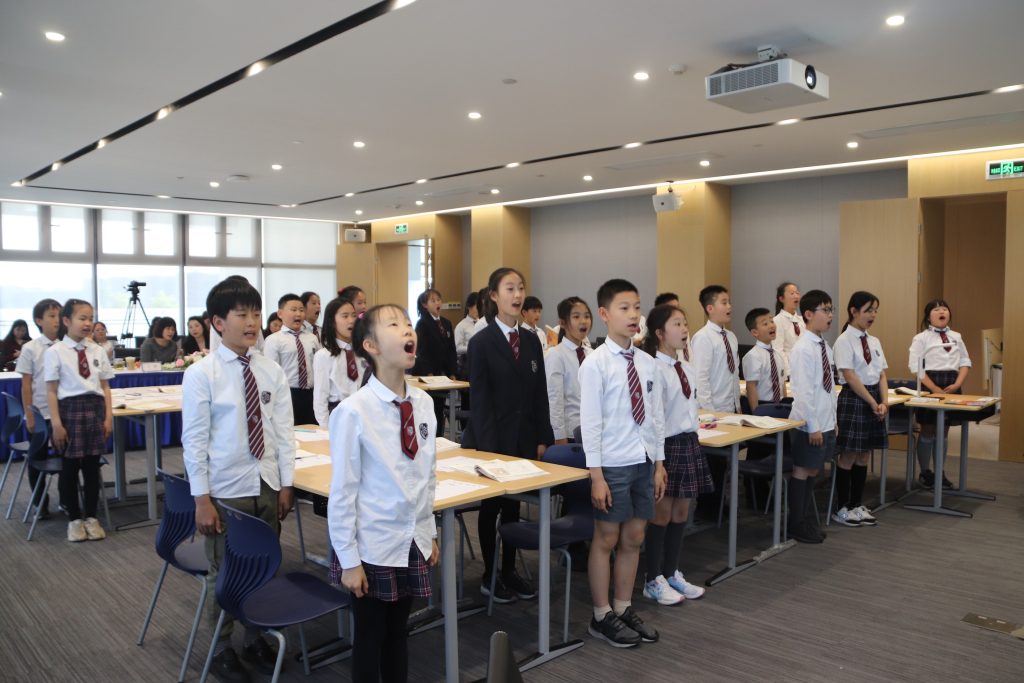
Teacher Hu Yu delivered a “White Goose” lesson, which emphasized enriching students’ experiences in the classroom. This particular lesson focused on Chinese language literacy, specifically guiding students on how to write about the arrogant characteristics of the white goose in the text. Teacher Hu carefully helped students appreciate the author’s true love for the goose and subtly taught key and difficult points without leaving any trace. Under Teacher Hu’s guidance, the students were able to unlock their imaginations and vividly imitate the expressions and movements of the white goose. Moreover, Teacher Hu’s unique teaching methods allowed her to supplement any gaps in the text. For example, when Teacher Hu “caught” the good goose and “shouted loudly,” the students were able to imagine what the goose said and interpreted meanings from the “goose language”. This exercise not only helped the students supplement the goose’s language with their own ideas, but they also transformed into lively “little white geese” through their expressions and proud tone of voice. Throughout the class, the children actively thought about Teacher Hu’s questions and gave bold and creative answers. Through such a vivid lesson, the goose’s ‘arrogant’ personality was further showcased.
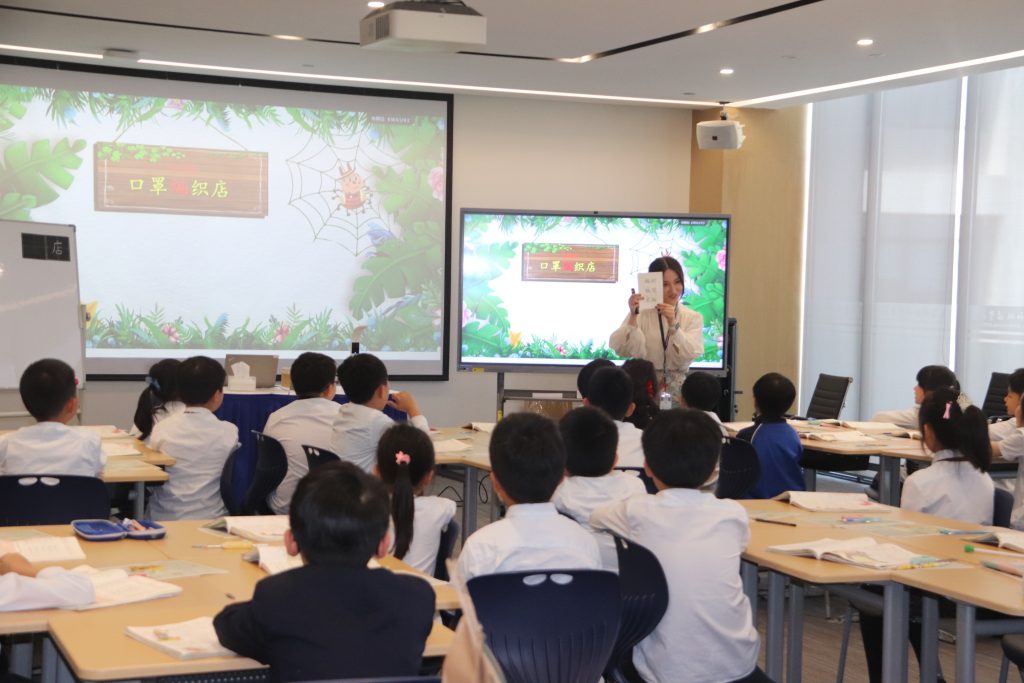
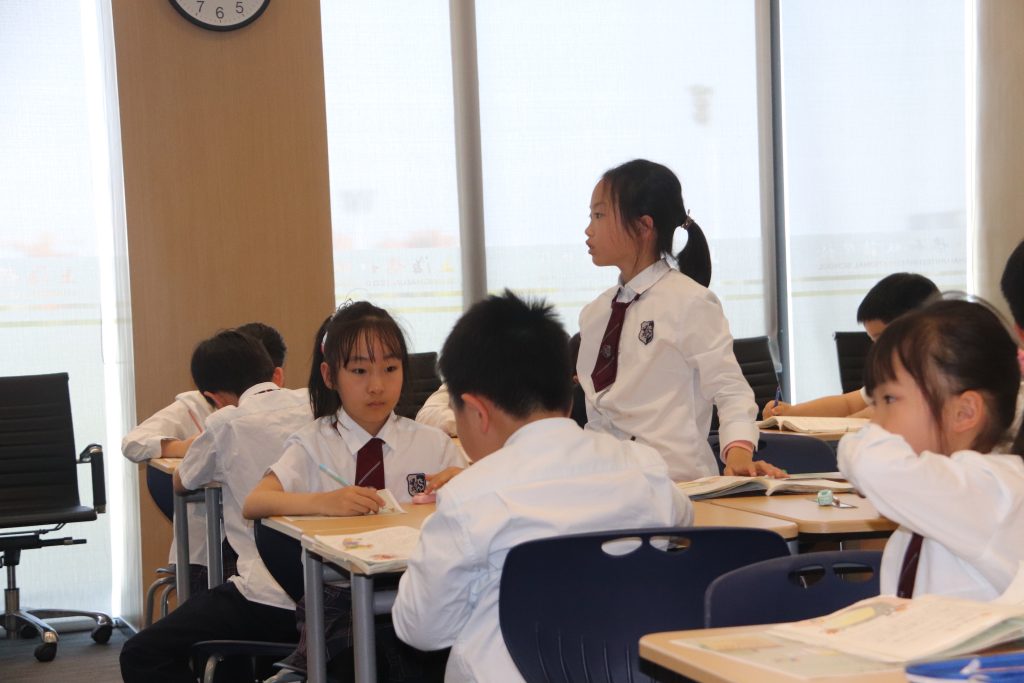
Teacher Huang Yun is known for being friendly and easy-going, and tailors her teaching language to the personality characteristics of young students. Her teaching approach for ‘Spider Shop’ revolved closely around the teaching objectives, and emphasized the guidance of learning methods during the teaching process. After introducing the content of the text, she provided students with ample time to practice organizing their language, after which they presented on stage as a ‘little narrator’. The students re able to quickly grasp the idea and learned to vividly describe the process of opening a spider store in their own language. As they presented their work, the other students acted as small judges and gave evaluations through star scoring, ensuring that every student had a sense of classroom participation and felt like a true leader. In addition to the presentation aspect, Teacher Huang also paid close attention to the construction and application of language, using techniques such as “reading stories, telling stories, and compiling stories” to ensure that all students were fully engaged in the process. Through her guidance, the students quickly understood why the process of opening a store for spiders may not be smooth, and used their newfound wisdom and language skills to help the spiders find ways to overcome their obstacles. By using her own textbook interpretation abilities, Teacher Huang allowed for an immersive experience of the language. She also encouraged her students to discover language patterns, improve their language expression, and cultivate innovative thinking through personal storytelling.
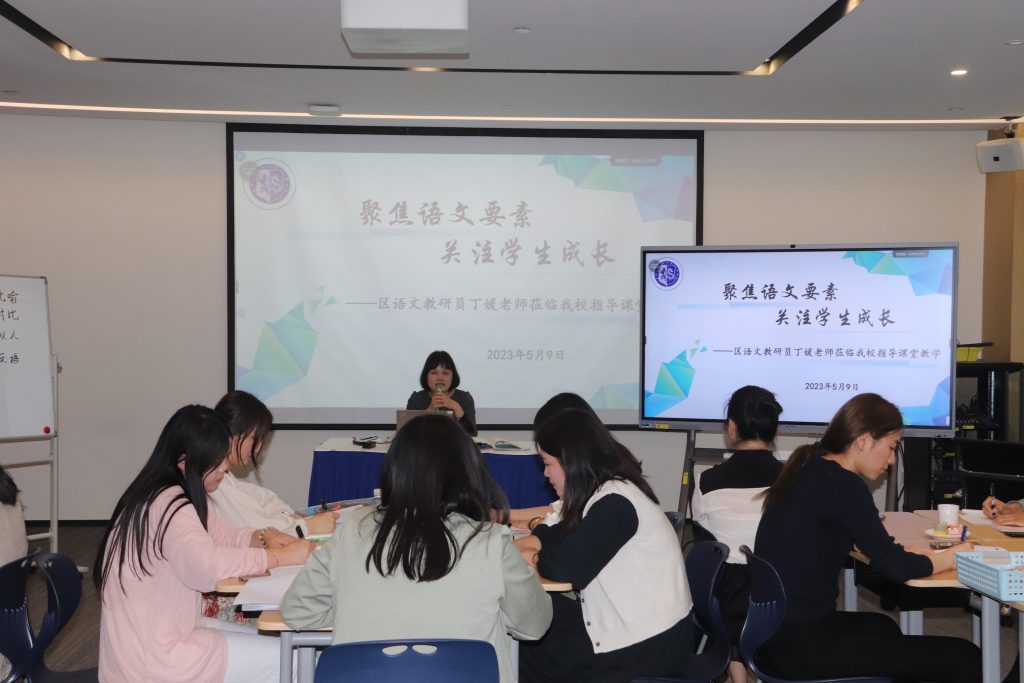
After class, Professor Ding Yuan evaluated the instruction given by the two teachers and gave positive feedback. She commended Teacher Hu Yu’s grand class atmosphere, as well as her ability to fully interpret the textbook in an in-depth way. Meanwhile, Teacher Huang Yun’s childlike teaching style was admired, as she managed to make the classroom lively with various interactive teaching methods. Following the evaluation, Professor Ding Yuan selected a writing and composition task that aligned with the specific goals of students from two different grades, adhering to the new Chinese curriculum standards. Through a case analysis, she provided a detailed and meticulous explanation, helping teachers better understand the importance of goal orientation and consistency in teaching, learning, and evaluation. The Chinese language teachers who attended the evaluation class expressed their satisfaction and appreciation for the presentation and discussion, stating that they had learned a lot from each other throughout the day.
Teacher Zhu Fenglian

I have greatly benefited from being in Teacher Hu’s classroom, and I would like to discuss my feelings about it from two aspects. Firstly, I was impressed by the clear goals and the ability to overcome difficulties. The lesson I attended was the second period of a new lesson, which continued from the first period where students learned about the content of the article and the pride of the white goose in terms of its call, pace, and eating habits. The difficulty of the lesson was understanding that the author’s love for the white goose was expressed through seemingly negative words. Ms. Hu worked hard to guide students, pay attention to descriptive details, and help them understand the author’s feelings towards the goose. She also guided students to pay attention to the author’s writing style and encouraged them to express their love for small animals. This helped me understand that Chinese language classrooms should strive for both the instrumental and humanistic aspects of language learning, with a focus on expressing emotions and creating a sense of empathy. Secondly, I was impressed by Ms. Hu’s attention to students and her ability to enrich the learning experience. Ms. Hu skillfully used classroom teaching techniques to accurately capture the children’s preferences and strengths, which helped her fully mobilize their subjective initiative in the classroom. This approach enabled students to actively learn and express themselves, which was a direct result of Ms. Hu’s long-term training and empowerment of her students. It was amazing to see the encouragement and guidance given by the teacher, which truly motivated the children. Overall, being in Ms. Hu’s classroom was a great experience and I am grateful for the opportunity to learn from such a talented teacher.
Teacher Wang Luyao

In her teaching of the “Spider opens a shop”, Teacher Huang adopted the method of casual reading, understanding the meaning of words within the context, and memorizing them through actions. For example, she had students remember the word ‘squatting’ by doing the action itself. They understood the meaning of ‘loneliness’ through a recitation of the first natural paragraph and incorporated their life experiences to remember the word ‘stores.’ Furthermore, tracing the origin of glyphs helped students understand words such as ‘cover’ and ‘weave.’ When it comes to writing, Teacher Huang focused on guiding students in the writing of apostrophes using the four characters “decision, store”. She teaches different methods for writing each character, including long apostrophes, short apostrophes, and vertical apostrophes. Through her teaching in these two areas, Teacher Huang displays a solid and unique teaching method, which is worthy of our learning.
Teacher Wang Zihan:
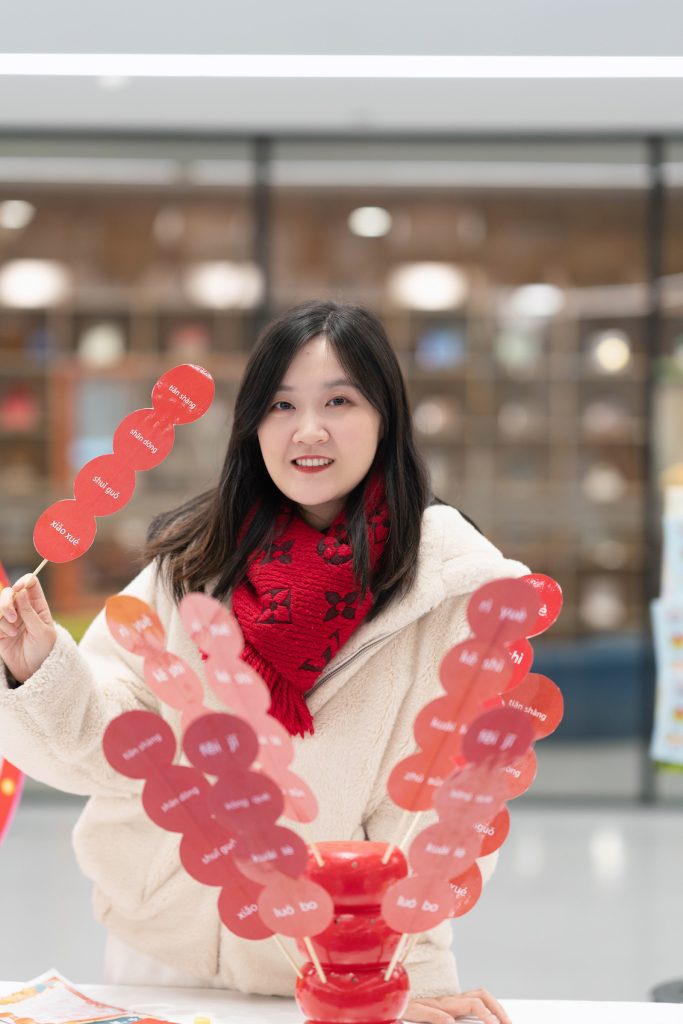
Today, I had the privilege of listening to two open classes by Teacher Huang and Teacher Hu, which showcased the classroom demeanour of students in the lower and middle to high years, as well as the unique teaching charm of the two teachers. The lesson, the ‘Spider opens a shop’, closely focuses on Chinese language elements, allowing students to apply what they have learned, improving their thinking and oral expression abilities, and can be said to have immediate effects such as reflecting the effectiveness of a teachers’ instruction. The “White Goose” lesson was a highly interactive lesson, and Teacher Hu could freely retract and release it, providing students with ample space for thinking and exploration in the classroom, truly returning the classroom to students. We also listened to the lecture on “Writing Words and Exercises” by Professor Ding Yuan, which greatly benefited everyone. Professor Ding used two vivid teaching cases to analyze the goals and requirements of exercise teaching layer by layer, emphasizing the consistency of teaching, learning, and evaluation, providing a clear and easy to operate path for teachers’ classroom guidance. Under the guidance of Professor Ding, I believe that the writing teaching level of the teachers will be further improved.
Teacher Han Xuan:

Today, I had the opportunity to experience the charm of two teachers who presented engaging Chinese language classes for students of different age groups. Teacher Huang Yun selected the course, a “Spider opens a shop.” She used innovative teaching methods such as blackboard writing and student narratives to keep students interested and engaged while learning complex concepts. This approach allows students to learn organically and unconsciously. On the other hand, Teacher Hu Yu’s class on “White Goose” showcased a different approach to teaching Chinese language. With open-ended questions, Teacher Hu encouraged her students to think creatively and provide exciting answers. Her student-centered approach enriched the learning experience for her students. Both teachers had a youthful and distinctive style that effectively engaged students and gave them a deeper understanding of the Chinese language. I have learned a great deal from their teaching styles and look forward to incorporating their teaching approaches into my own classes.
The Chinese language teachers in SUIS Qingpu’s Primary School have a growth mindset, always willing to learn and understand. They continuously improve their teaching methods through experience, constantly striving for progress. With the help of their colleagues and friends, they aim to collaborate and move towards a better tomorrow for the students and the SUIS Qingpu community.



